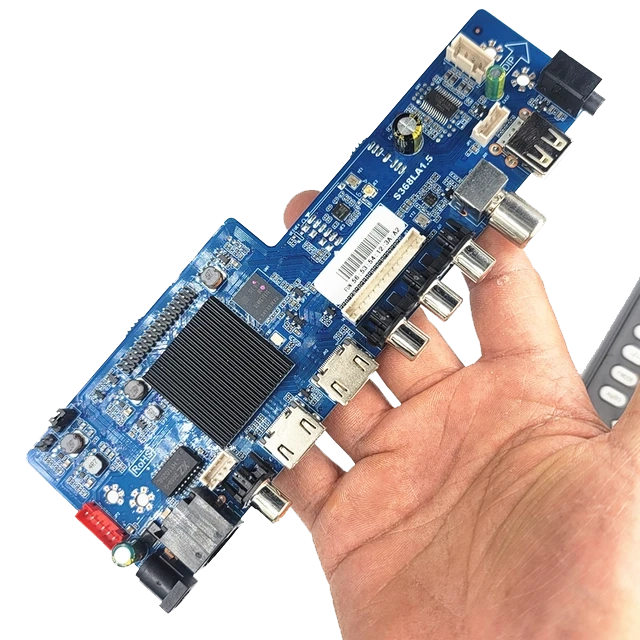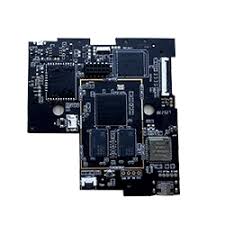
Set forth on the area of software design for Android for miniature computing devices. This extensive guide will grant you the key concepts and real-world instructions to efficiently build your own Android-driven SBC implementations. From understanding the fundamental concepts of Android app creation to delving into sophisticated world of SBC systems, this guide will facilitate your a fruitful project development.
- Explore the wide range of available SBC architectures and their specific potentials.
- Learn thoroughly essential Android engineering resources, including Android Studio, SDKs, and emulators.
- Acquire knowledge of the intricacies of adjusting your SBC infrastructure for seamless Android functionality.
Study best practices for creating robust and high-performing Android solutions tailored for SBC hardware constraints.
Building Apps for SBCs Using Android
Leveraging the power of a Single Board Computer (SBC) for Android application engineering is an increasingly favored approach. These compact and versatile gadgets provide a cost-effective foundation for testing, enabling developers to employ the capabilities of Android without the need for a traditional laptop. By harnessing the SBC's resources such as its processor, memory, and connectivity options, developers can design Android applications that range from simple utilities to more complex platforms. The skill to customize the hardware and software environment further boosts the flexibility of SBCs for Android development, making them a instrumental tool for both students.
Maximizing Android Dev Boards for Internet of Things
For budding innovators delving into the world of Internet of Things (IoT), Android dev boards present a attractive platform to bring their cutting-edge ideas to life. These compact boards, often equipped with cutting-edge hardware and intuitive software development kits (SDKs), provide a sound foundation for rolling out a wide range of IoT systems. From home coordination systems to utility monitoring technologies, Android dev boards empower companies to construct cutting-edge IoT projects with convenience.
- Capitalizing on the extensive Android ecosystem, developers can engage a vast library of tools specifically designed for IoT projects. This array of resources allows for improved development and enables the creation of sophisticated IoT solutions.
- Furthermore, Android dev boards often feature built-in connectivity options such as Wi-Fi, Bluetooth, and cellular, facilitating seamless data exchange with other devices and cloud platforms. This connectivity capability is vital for enabling real-time data collection and remote supervision of IoT solutions.
- To conclude, the open-source nature of Android dev boards fosters a thriving ecosystem of developers, providing ample support for tackling any challenges encountered during the development process.
Analyzing Android SBC Capabilities for Media
The domain of multimedia applications is constantly expanding, pushing the boundaries of what's achievable. In this dynamic landscape, Android System-on-Chips (SBCs) have emerged as a versatile option for developers seeking to assemble innovative and engaging experiences.
The stated compact yet comprehensive SBCs grant a exclusive blend of processing performance, connectivity, and multimedia abilities that make them perfect for a broad selection of applications.
About high-definition video playback to on-the-fly audio processing, Android SBCs are ready to handle the requests of today's multimedia setting.
- Moreover, their open-source nature grants developers to modify hardware and software to conform to specific application criteria.
- The described level of malleability facilitates for developers to extend the limits of multimedia innovation.
Discover Advanced Android Tweaks with SBCs
A development board for example the Raspberry Pi or another Nexus Player grants a unique opportunity to modify your Android experience. By experimenting with the underlying platform, you can adjust everything from the OS core to individual applications. This level of freedom allows experimenters to explore possibilities and create truly personalized Android platforms. Whether you're aiming to upgrade your device's performance, investigate new functionalities, or simply meet your curiosity, a dev board can open up a world of alternatives.
- Absorb the fundamentals of Android development
- Craft custom ROMs and kernels
- Analyze new apps and features
- Combine your device to other hardware
Addressing Android SBC Malfunctions
When working with Android development on Single Board Computers (SBCs), you might encounter a variety of challenges. These can range from simple configuration errors to complex software bugs. Effective debugging and troubleshooting are crucial for identifying the root cause of these problems and restoring your Android environment to full functionality. Tap into the vast resources available online, such as forums and documentation, to gain insights into common issues faced by other developers in similar setups.
Start by carefully reviewing your runtime reports for any error messages or warnings that might provide clues about the problem. Apply a solid logging strategy within your Android application to capture relevant information during runtime. This can help pinpoint specific areas where errors are occurring. Don't hesitate to test different configurations and settings to see how they affect the behavior of your system.
- Assign time in understanding the hardware capabilities of your SBC, as limitations in processing power or memory can contribute to Android performance issues.
- Engineer a strong understanding of the Android SDK and its resources to effectively debug your applications.
- Stay updated with the latest updates of both Android and your SBC's firmware, as these often include bug fixes and performance improvements.
Improving Android SBC Speed
When utilizing Android-based SOC SBCs, maximizing capability is paramount. To achieve this, developers and engineers can leverage a collection of strategies. This involves systematically fine-tuning software and hardware components to provide seamless functionality. Key areas for refinement include performance regulation, power consumption, network connectivity, and application execution.
- Emphasizing real-time signal processing is critical for applications that demand immediate responses.
- Capitalizing on lightweight components can dramatically reduce memory pressure, thereby refining overall responsiveness.
Regularly modernizing the Android operating system and platforms is important for addressing security loopholes and accessing functionality upgrades.
Deploying Security Strategies for Android SBCs
Securing your Android devices against threats is paramount. Utilizing sound security best practices for your Android System-on-a-Chip (SBC) configuration can significantly mitigate risks. Regularly upgrade your SBC's software to address exploits. Apply robust access restrictions to control user permissions and network connectivity. Conduct periodic security audits to identify potential pitfalls and install necessary safeguards.
- Guide your users about common security threats and best practices for protecting their devices.
- Defend sensitive data at rest and in transit using strong protocols.
By adhering to these best practices, you can create a more secure environment for your Android SBC.
Exploiting Sophisticated Android SBC Capabilities
The world of embedded Hardware (SBCs) provides a compelling platform for developing next-generation Android applications. By combining the power of Android with the unique capabilities of SBCs, developers can create multi-functional solutions across diverse areas. This approach offers unmatched flexibility and customization options, enabling the development of bespoke applications that cater to specific demands. Whether it's for consumer electronics, SBCs coupled with Android development open up a myriad range of possibilities.
- Capitalizing on the low-power nature of SBCs for resource-constrained environments.
- Developing Android applications with prompt responsiveness for time-sensitive tasks.
- Fusing Android's user interface capabilities with custom hardware peripherals for a seamless experience.
The combination of Android and SBCs empowers developers to push the boundaries of innovation, creating transformative applications that reshape various fields.
Dominance of SBCs in Android Projects
The landscape of Android development is rapidly evolving, with Single Board Computers (SBCs) emerging as a prominent force. These compact and versatile gadgets offer developers a powerful platform for experimentation, prototyping, and even full-scale application deployment. With their affordability, expandability, and flourishing ecosystems, SBCs are poised to alter the way we produce Android applications. Developers are passionately embracing this upcoming paradigm, unlocking a world of possibilities for creating exciting user experiences.
From embedded solutions to networked devices, SBCs provide the perfect support for a wide range of Android projects. Employing the power of open-source software and hardware, developers can design innovative solutions that tackle real-world challenges.
Android SBC Project Concepts
Android Single Board Computers (SBCs) are flexible little instruments that can be used to construct a wide range of undertakings. If you're a student, there are plenty of interesting project ideas to explore. One trending category is intelligent home systems, where you can use an Android SBC to regulate your devices. You could also construct a personalized media center, play content on a larger screen, or even experiment with robotics and programming.
- Diverse Certain Various Several
- Some other ideas include fabricating educational products, constructing wearable devices, or even helping develop open-source applications. The possibilities are truly extensive.
